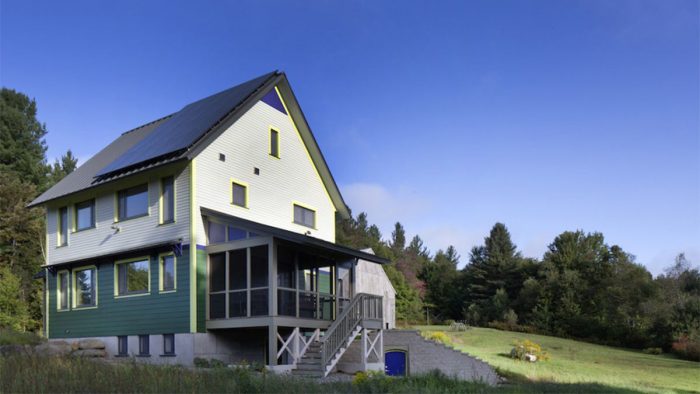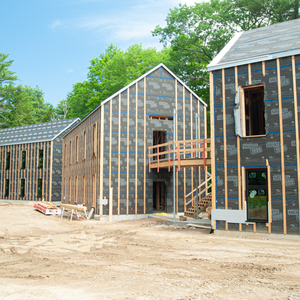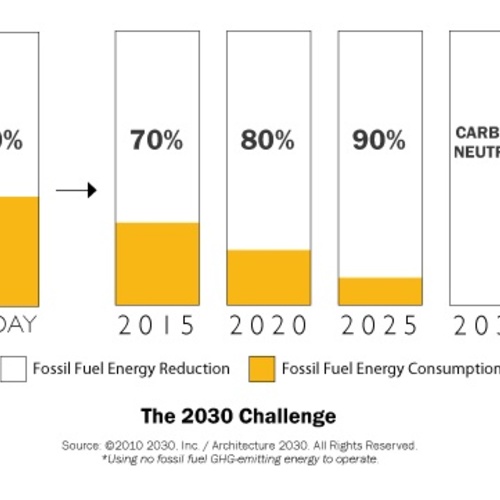
Not long ago, I spoke with Kirsten Ritchie, principal of Gensler—a global integrated architecture, design, planning, and consulting firm—about the role architects and designers can play in combating climate change. She views it this way: “If we specify products with reduced carbon footprints, select locally sourced materials that don’t require much energy to transport, use resilient materials with longer lifespans, and consider each product’s life beyond its present use, then we significantly lessen the environmental impact of the places we design before occupancy even begins.”
Our conversation put me in mind of the 2030 Challenge, which was introduced in 2006 by Architecture 2030, a non-profit organization established in response to the climate crisis. The 2030 Challenge invites the global architecture and building community to plan, design, and build for a carbon-neutral future. The idea is to “transform the practice of architecture to respond to the climate crisis in a way that is holistic, firm-wide, project-based, and data-driven.”
The 2030 Challenge proposes the following targets:
- All new buildings, developments, and major renovations shall be designed to meet a fossil-fuel, greenhouse-gas-emitting, energy-consumption performance standard of 70% below the regional (or country) median for that building type.
- At minimum, an equal amount of existing building area shall be renovated annually to meet a fossil-fuel, greenhouse gas-emitting, energy-consumption performance standard of 70% of the regional (or country) median for that building type.
- The fossil fuel reduction standard for all new buildings and major renovations shall be increased to 80% in 2020, 90% in 2025, and carbon-neutral in 2030.
 Tracking energy metrics is the most important step toward achieving these goals. Participating firms report to the American Institute of Architects (AIA) on the predicted performance of all projects in their portfolio as well as their own building’s energy consumption.
Tracking energy metrics is the most important step toward achieving these goals. Participating firms report to the American Institute of Architects (AIA) on the predicted performance of all projects in their portfolio as well as their own building’s energy consumption.

I was curious to know how many residential design firms are participating. Though…
Weekly Newsletter
Get building science and energy efficiency advice, plus special offers, in your inbox.

This article is only available to GBA Prime Members
Sign up for a free trial and get instant access to this article as well as GBA’s complete library of premium articles and construction details.
Start Free TrialAlready a member? Log in















5 Comments
Thumbs up to the 2030 Challenge for pushing the (building) envelope.
Big thumbs down for allowing projects in remote or low-density settings, 3-car garages (as pictured above) and perpetuating a lifestyle that involves a lot of daily driving.
You make an excellent point, Vivian.
Vivian,
The 2030 Commitment is not just for high performance urban residences. It is for all residential building types including larger homes (a relative term) and homes outside of cities. I agree that one of the first discussions one should have with a client should be about the site and the size of the home, as it is definitely a better idea to reduce the amount of driving and the size of the home. However, just because a home is in a suburb or is a higher end home doesn't get it off the hook for designing to the requirements of the 2030 Commitment.
The real challenge as I see it is to get the 2030 Commitment program adopted by firms that aren't necessarily leading edge firms specializing in high performance designs. It's getting it integrated into the culture of as many firm's as possible, as quickly as possible.
Nathan Kipnis, FAIA
Immediate past national co-chair of the 2030 Commitment
Remote locations don't automatically result in a lot of daily driving. For those who grow their own food, harvest their fuel and work remotely, a remote location may have a better footprint than those who live in high-density housing who cannot do that, and who have little control over their energy use. And, that 3-car garage can house an electric tractor, storage and a single electric vehicle that is charged by the solar panels. Living in the country is not necessarily a high-carbon way of life.
My driving has decreased dramatically by moving to a remote location. I have an unconditioned 2 car garage I use as a workshop and storage, with zero cars in it. I think the notion that everything but highly urbanized living must be banned is counterproductive, especially if we manage to electrify transportation.
Log in or become a member to post a comment.
Sign up Log in